- Home
- Chris Ryan
Flash Flood cr-1 Page 3
Flash Flood cr-1 Read online
Page 3
Ben winced whenever adults said that to him. ‘Hi, Cally.’
‘Here, get that wet coat off. I’ll sign you in and let’s get something from the canteen. Are you hungry?’
They bought sandwiches from the canteen in the basement and then took the lift up to the top floor. The doors opened onto an enormous room. Floor-to-ceiling windows looked out at the top of a big Ferris wheel, 135 metres high: the London Eye.
‘This is the viewing gallery,’ said Cally proudly. ‘It used to be open to the public until it became a security risk. So it’s quite a privilege to come up here now. Not many people get to see this.’
Ben could think of more interesting attractions to visit on a day out in London — the London Eye itself, for instance — but he was too polite to say so. And he’d been on the London Eye the last time he was in London with Bel, so he’d actually seen the view before. ‘Very nice,’ he said.
While they ate their sandwiches Cally asked him questions about how he was doing at school. He noticed she didn’t ask about his father. That didn’t surprise him. Bel’s friends and his dad’s friends were poles apart. After ten minutes Cally looked at her watch. ‘I’m afraid I’ve got to go to a meeting. I’m really sorry — I told your mum I’d try to get out of it, but I really do have to be there. If you need me I’ll be in the conference room. It’s next to the canteen.’
‘I’ll be fine,’ said Ben.
‘OK. I’ll come and collect you in an hour.’ She called the lift, stepped in with a wave and was gone. Now Ben was on his own.
Ben put his headphones in and switched on his personal radio/MP3 player. Looking around as he listened to the Kaiser Chiefs, he spotted a bronze plaque on a stand next to the window. He wandered over to look at it. Engraved on the plaque was a drawing of the skyline, with a key explaining the names of the various buildings that lined the river downstream from the ArBonCo Centre. Ben could make out the dome of St Paul’s, dwarfed by the lipstick-shaped tower of the Gherkin building. He walked along the gallery to the end of the room. Another bronze plaque showed the map of the view from there: the Post Office Tower up to the north; the river curving away, under Westminster Bridge and Lambeth Bridge; the Houses of Parliament — that was presumably where Bel was at the moment. Probably haranguing another politician about global warming.
The back of the building looked all the way across the roofs to Sydenham Hill and the Crystal Palace television transmitter, its red light just a faint smudge against the heavy grey sky.
Bel must be delighted about the weather today: it was a big I-told-you-so for the politicians who denied that the climate was changing. As he looked down at the riverbanks, he could see how high the Thames was — well over the normal high-tide mark, as far as he could see.
Ben had done a full circuit and was back at the London Eye. Had it moved? Yes: the people in the red cagoules were now at one o’clock instead of twelve. The wheel went slowly, like the hour hand on a clock. Ben had spent the whole day so far watching time drag by. First on a train going nowhere, now killing time at the top of this building.
The Kaiser Chiefs track finished. Ben leaned on the guard rail and decided to see what the London radio stations were like. Usually he listened to his native Key 103 Radio in Manchester, but down here he could try Capital FM. He skipped through the stations, looking for the frequency, and got a short blast of the news on Radio Four. The announcer’s voice made him think of home. His dad usually had it on while he was tinkering in his workshop. He listened for a moment:
‘Motoring organizations have issued a weather warning to drivers, warning them not to set out unless their journey is absolutely necessary. Several towns in the South West, including Boscastle which was devastated by flooding a few years ago, are on flood alert.’
Ben found Capital. He found a chirpy female presenter, but the message was the same. ‘Don’t travel by car unless it’s absolutely necessary. The M25 is gridlocked after flooding at Wisley. This is Meena Chohan in the Flying Eye, with all the latest traffic news as it happens.’
He tuned through the stations until he found one playing an Usher track. He looked out of the window to see how many more millimetres the London Eye had moved.
Suddenly something caught his attention down below.
The river.
One moment it was lapping at the walls of the Embankment. The next, it was rising, as though the water was swelling, like a bath filling too fast.
And it didn’t stop.
It swallowed the walls of the Embankment on the north side and spilled over the banks on the south …
Chapter Five
Down on the street below, the pavements, dark grey with rain, seemed to dissolve as the water surged over them.
People who were out walking, heads down under hats and umbrellas, looked at the water swirling at their feet and started to run. They ran up the steps of the London Aquarium.
The water followed them. It flowed over the half-wall by the National Theatre and swirled around the deserted café, clattering the chairs together. It lapped at the theatre entrance, then swirled down the passageways between the buildings and out over the roads.
In moments it had covered the square of green grass in front of the entrance to the ArBonCo Centre. It crept over the road, choking an excavator so that it stalled with its arm poised in the air like a yellow claw. It gushed down the steps of the ArBonCo Centre and filled the sunken stepped area in front of the glass doors like a swimming pool.
On Ben’s headphones the music continued. The radio station seemed unaware of the catastrophe. He took the phones out of his ears.
The noise from outside was deafening. There was a loud roar like an earthquake as the water slammed into the sides of buildings. Very faintly Ben could hear other noises too; the faintest of sounds that he thought might be screams.
Looking across the river, he saw that, over on the north bank, the road was invisible. The river was twice as wide as it had been, bordered now by the rows of buildings opposite. And still the water continued to rise.
Ben saw a set of binoculars on a stand next to the window. He grabbed them and put them to his eyes.
What he saw made him go cold all over.
A tourist stall by the London Eye buckled as he watched, its canvas roof collapsing. Policemen’s helmets, Union Jack bowler hats, brightly coloured T-shirts and a host of souvenirs spread out in the water and were swept upriver in the strong current. Burger wrappers and cardboard coffee cups were flushed out of bins and set off in clusters.
More, larger debris followed: the wooden chairs that had been standing outside the theatre; books and trestle tables from a stall under Waterloo Bridge; placards from the National Film Theatre shop and menu boards from the restaurants.
A distinctive shape skimmed through the water. Ben tried to focus the binoculars on it, unable to believe his eyes. A long pale grey outline; a triangular fin like a sail. He saw an eye. And then the words: SEE THE TIGER SHARK AT THE LONDON AQUARIUM. Yes, he was indeed looking at a shark, but it was a cardboard cut-out.
He focused on the far side of the river again. What had happened to the vehicles that had been travelling along the Embankment? It was lunch time, and quite a few people had been hurrying along the pavement under their inadequate umbrellas. A frisson of horror went up his spine. He realized he could no longer see the front doors of the buildings opposite. He couldn’t see the cars and lorries because the water had completely engulfed them. That must mean the water was at least two metres deep on the Embankment. Probably three metres, because it was nearly up to the first-floor windows of the white building opposite.
Then Ben noticed the top of a double-decker bus sailing sideways past the white building. Only the red rectangle of its roof was visible; the rest was submerged.
Ben was amazed by the speed at which the flood waters had surged up. In only a matter of seconds, it seemed, they had risen up over the Embankment walls and totally covered the road above.
And then he began to see the people — helpless shapes borne along by the tide, arms waving as they tried to attract attention, to get help, to grab onto things. Others were holding onto trees, clinging on like monkeys, trying to climb out of the water. The trees looked fragile and spindly, like clumps of coral. Ben realized their trunks were submerged: only their tops stood clear of the water.
One woman was trying to hold onto a coral-tree, but the branches wouldn’t take her weight. Ben watched, appalled, as the branches snapped and she was pulled off into the current. Then he swung the binoculars away. He didn’t want to see any more.
He focused on the river to the east of the ArBonCo Centre. There were more small helpless objects being swirled along. He told himself these shapes were debris, furniture, chairs from cafés; anything but people.
For miles downstream towards the obelisk of the Canary Wharf Tower, the river was lapping at windows. The roads had vanished. Ben could see cars, but they were being borne along in the water like boats, only visible as metal roofs, rocking in the current. And it was the same in the other direction.
In the windows of the buildings opposite he could see movement: rows of faces gathering to look out at the changed world. Their expressions all said the same thing:
We’re trapped.
That was when it dawned on Ben that he was trapped too.
Trapped — like hundreds of thousands of Londoners, now struggling to come to terms with what had happened to them.
Struggling to survive …
Chapter Six
The traffic lights had been red for ages. Charleen, in her Bentley Flying Spur, sighed and put her handbrake on.
It sounded a bit odd outside. Watery.
She looked out at the traffic to either side of her. And noticed the water.
Even as she watched, the surface of the road disappeared completely. The pavements went next, engulfed by mud-coloured water. And then her whole car just seemed to die. The light behind the LCD control panel went dark, the air conditioning fell silent and the almost inaudible throb of the engine, silent as a heartbeat, was still.
£115, 000-worth of Bentley never stalled. It was simply impossible. Charleen cursed and turned the key, waiting for the familiar muted roar under the bonnet which always set butterflies dancing in her stomach.
The engine turned over once and died. She turned the key back sharply and then pulled it out. Something was very wrong. The water must be so deep it had been sucked into the engine. And now she could hear a ghostly, ominous noise …
The roar suddenly grew louder. A muddy avalanche of water and rubbish was rumbling towards her down the road. In seconds, it was up to the doors. All around her, the cars were reduced to windowed pods poking out above the dirty swirling water.
Forget the car, she decided, panicking. She had to get out. She released the locks and pressed down the door handle.
The door wouldn’t open.
She tried again, pushing her shoulder hard against it.
Nothing. The weight of the water outside was holding the door shut. The water was still rising, lapping at the windows like dirty grey lips.
A black car was coming towards her now, rocking on the water. Inside she could see the driver hammering at the windows, trying to get out. Under the water the car smashed into her bonnet with a dull crunch. Then her front wheels reared up off the ground, as if a giant hand was lifting the car.
The heavy Bentley slid along the road sideways, into a mini-van, crumpling it around a lamppost like a tin can. Two pale arms flailed against the bonnet, then slid beneath the surface of the water.
Charleen’s stomach turned over. That had been the driver. She thanked heavens the Bentley was so solid. At least when it eventually stopped she’d be all right.
Then she saw the window coming up: a glossy expanse of plate glass, the lighted interior showing the foyer of a big office building. She ducked.
The plate-glass window shattered as two and a half tonnes of car hit it. The noise was amazing, high and tinkling in the watery air. Shards of glass rained down on the roof.
The arch at the top of the window smashed into the side of the car, rolling it over. Charleen found herself squashed against the ceiling, her head muzzy with the impact. The car was upside down.
And it was still moving. Outside, a confusion of shapes hurtled towards her in the murky water: a desk, chairs, printers, paper, the black eye of a computer screen. All mixed up together, as if caught in a hurricane.
Charleen started to scream …
* * *
Jackie got off the Northern Line at Elephant and Castle Underground Station, and made her way towards the Bakerloo Line. It was an old, dirty station and she always tried to tune out her surroundings when she used it. All she was thinking about was getting down to the Bakerloo Line so that she could continue reading the next bit of her magazine.
She walked past the heavy blast doors in the corridor, looking at her feet as she went along, careful not to step on the curved steel tracks near the doors as her stiletto heels would probably slip on them.
Why did those tracks always look so bright and shiny, as though the doors were constantly swinging to and fro over them? If you looked at the blast doors, they were thick with dust and grease. They looked like they had never moved in years — as firmly stuck in position as the riveted sections of the tunnel above.
Jackie reached the steps to the Bakerloo Line and turned to go down. She unfolded her magazine, finding her place. Nearly at the platform now.
A noise behind her made her look round. The other people in the tunnel turned back too.
The giant riveted blast doors were starting to move. For a moment Jackie thought she was hallucinating; she stopped and stared. As she watched, the door swung smoothly away from the wall to close off the passageway.
It was like someone had started a race. One moment the corridor looked quite empty: only a few people were walking to and from the platforms. The next minute they were all running towards the doors and suddenly the corridor seemed very crowded. A big guy pulled Jackie aside and pushed his way in front of her. An elderly man and his granddaughter were crushed against the wall, but no one noticed.
Everyone had just one goal: to reach those doors before they closed.
Jackie didn’t see how many people got through. She was short, even in her high heels. The taller, stronger ones reached the doors before her and by the time the weight of the crowd had carried her there, the doorway was sealed shut.
She was thrown against it by the weight of the people behind her. They screamed and started to claw at the doors with their fingers, as though they could pull them open again. But they were solid steel and blast proof. Immoveable.
All over the Tube system, giant doors were closing. The network was sealing itself up.
For a moment Jackie began to wonder if she was having a peculiar dream. In a moment she would wake, either at home in bed or sitting safely on a train, her dream inspired by the sight of those heavy-duty doors and the bright steel runners in the floor. Surely she couldn’t really be here, wedged against the steel doors, the ridges pushing into her ribs, forcing the air out of her lungs so that she could hardly breathe …
* * *
Sanjay was on a crowded Tube train, lost in the world of his iPod. The train shuddered to a halt. Even then he didn’t take too much notice. It happened all the time. The train would start again soon.
The faces around him looked irritated. The people who were standing up recovered their balance, adjusted their grip on whatever rail or strap they were holding onto, and resumed what they were doing to pass the time. Some were reading novels, some newspapers; some were counting the stops on the tube map above the head of the person opposite. It was just a normal day travelling on the Tube.
Then the lights went down. That was really annoying. Sanjay took one headphone out in case there was an announcement from the driver. All he heard was people around him complaining.
‘More
power cuts.’
‘Because of that bloody rain.’
‘The other day those people were stuck in a train for two hours.’
‘Two hours?!’
There was no announcement. Sanjay put the headphone back in his ear. Lemon Jelly carried on playing their cheerful electronic burbles. And on. And on.
If they were here for two hours, Sanjay had more than enough chillout music to stay the course.
He sat back, so relaxed he felt he could almost go to sleep. Actually it was rather pleasant being in total darkness. Because he couldn’t see the faces around him, he could be anywhere.
Another track finished and Sanjay was aware of a faint squawking outside the world of his headphones. Maybe the driver was making an announcement. He took one headphone out again.
It wasn’t the driver on the tannoy.
It was the sound of people screaming.
Then Sanjay realized that his legs were wet …
Chapter Seven
Francisco Gomez had been lying back on his concrete bunk. The mattress in the police cell was thin and provided hardly any padding. He was looking at the pattern made by the painted bricks on the opposite wall. He had been looking at it for so long that he had lost track of time.
He was thinking that he would have to get used to amusing himself like this. He doubted whether there would be any more inspiring ways of passing the time once he got to prison.
It probably wouldn’t be a prison here in England. He’d been hiding out in London with his partner, but they’d almost certainly ship them back home. They were wanted in Spain for planting a car bomb in Madrid in 2001 that injured 65 people. He and his partner José Xavier had been caught in Chelsea this morning; he’d been thrown into this cell while José had been taken to another police station — he didn’t know where. He wondered if José would manage to escape and reach their rendezvous.
The water came slowly. It seeped in under the door while he was staring at the wall. He only noticed it when he heard a commotion outside.

 Global Strike
Global Strike Hijack
Hijack Special Forces Cadets 2
Special Forces Cadets 2 Ruthless
Ruthless Manhunter
Manhunter Special Forces Cadets 1
Special Forces Cadets 1 Red Strike
Red Strike Black Ops
Black Ops Agent 21: The Wire
Agent 21: The Wire Land of Fire
Land of Fire Alpha Force: Fault Line
Alpha Force: Fault Line Under Cover (Agent 21)
Under Cover (Agent 21)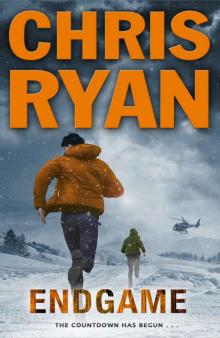 Endgame (Agent 21)
Endgame (Agent 21) Red Centre
Red Centre Blackout
Blackout Killing for the Company
Killing for the Company The Watchman
The Watchman Osama
Osama Who Dares Wins
Who Dares Wins The Kremlin Device
The Kremlin Device Hunter Killer
Hunter Killer Alpha Force: Untouchable
Alpha Force: Untouchable Stand By Stand By
Stand By Stand By Chris Ryan Extreme: Hard Target: Mission Four: Fallout
Chris Ryan Extreme: Hard Target: Mission Four: Fallout Greed mb-1
Greed mb-1 Alpha Force: Desert Pursuit
Alpha Force: Desert Pursuit Strike Back
Strike Back Greed
Greed The Bay Bulls Standoff
The Bay Bulls Standoff Stand By, Stand By gs-1
Stand By, Stand By gs-1 Outbreak
Outbreak Hunted
Hunted Vortex cr-4
Vortex cr-4 Rat-Catcher
Rat-Catcher Vortex
Vortex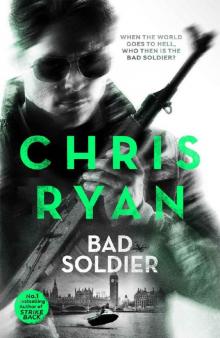 Bad Soldier
Bad Soldier Shadow Kill: A Strikeback Novel
Shadow Kill: A Strikeback Novel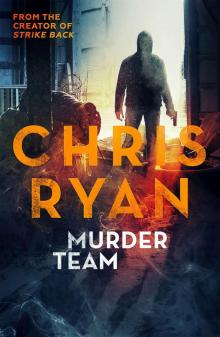 Murder Team (Kindle Single)
Murder Team (Kindle Single) One Good Turn
One Good Turn Flash Flood cr-1
Flash Flood cr-1 Night Strike
Night Strike Wildfire
Wildfire Agent 21: Reloaded: Book 2
Agent 21: Reloaded: Book 2 Chris Ryan Extreme: Hard Target: Mission Two: The Rock
Chris Ryan Extreme: Hard Target: Mission Two: The Rock Masters of War
Masters of War Murder Team
Murder Team War Dog
War Dog Wildfire cr-2
Wildfire cr-2 Survival
Survival The One That Got Away - Junior edition
The One That Got Away - Junior edition The Hit List
The Hit List The Kill Zone
The Kill Zone Medal of Honor
Medal of Honor Battleground
Battleground Twister
Twister Tenth Man Down gs-4
Tenth Man Down gs-4 The Kremlin Device gs-3
The Kremlin Device gs-3 Hostage
Hostage Bad Soldier: Danny Black Thriller 4
Bad Soldier: Danny Black Thriller 4 Alpha Force: Blood Money
Alpha Force: Blood Money Firefight
Firefight Chris Ryan Extreme: Hard Target: Mission One: Redeemer
Chris Ryan Extreme: Hard Target: Mission One: Redeemer Hit List
Hit List Zero Option gs-2
Zero Option gs-2 Black Gold
Black Gold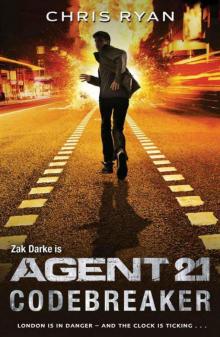 Agent 21: Codebreaker: Book 3
Agent 21: Codebreaker: Book 3 Zero Option
Zero Option Ultimate Weapon
Ultimate Weapon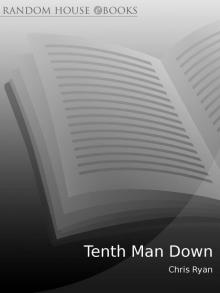 Tenth Man Down
Tenth Man Down Twister cr-5
Twister cr-5 Deathlist
Deathlist Hellfire
Hellfire Flash Flood
Flash Flood Battleground cr-6
Battleground cr-6 The Increment
The Increment